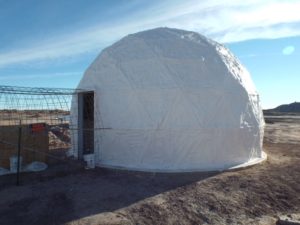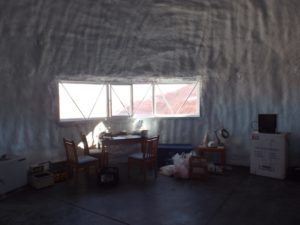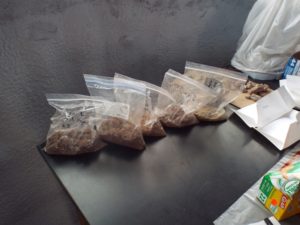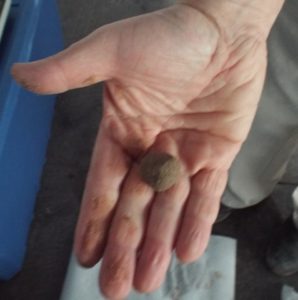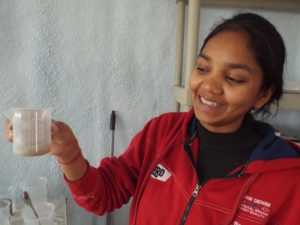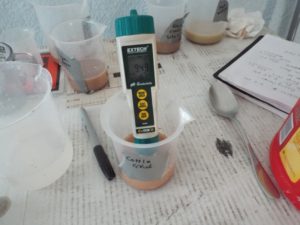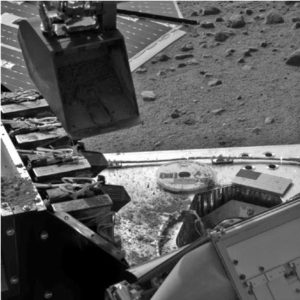Science post – November 16th
SOIL SCIENCE IN THE LAB
Jon Clarke
Today Anushree and I started doing experiments in the beautiful new science dome, the latest addition to the MDRS campus. Not yet fully furnished, it is already a useful working volume for field science.
Today we were determining some of the basic physical and chemical properties of soil samples using some widely used field laboratory methods.
The new science dome at MDRS.
Inside the dome. It has a great view and plenty of space for more equipment.
Soil samples ready for processing.
The first step is semi-quantitative determination of texture (sand, silt, clay proportions). This is the fun part. You mix water into your ample and roll it into a ball-if you can. Then you make a ribbon out of it. Playing with mud in the name of science!
You then measure out your soil sample…..
And mix it with 5 times the amount of water. Mix well! Thi8s is why it’s called the 1:5 method. You can measure the electrical conductivity and acidity of the resulting slurry.
At last some numbers. In this case pH. Yes, the soil is alkaline. Also salty.
Simple though this technique is, one used by soil scientists the world over, it is in principle similar to what has already been done on Mars. In 2009 the Wet Chemistry Lab on the Phoenix lander mixed distilled water with martian soil in the ration of 1:25, and the used sensitive electrodes to determine the amount and species of salt present in the soil and it’s pH. This is how perchlorate was discovered on Mars- the solution to many previously unanswered questions regarding martian soil behaviour.
Robot arm about to load soli sample into the Wet Chemistry Laboratory of the Phoenix lander. This was part of the MECA instrument suite.




